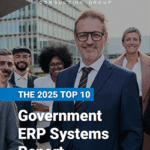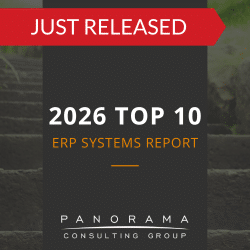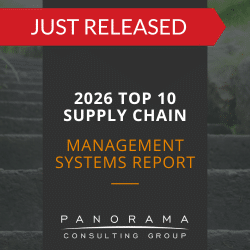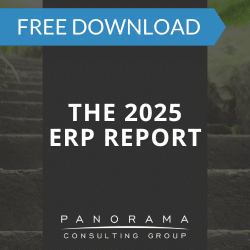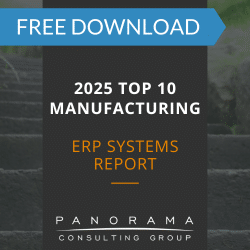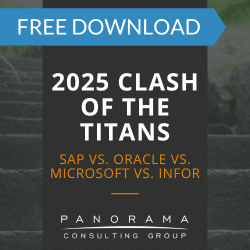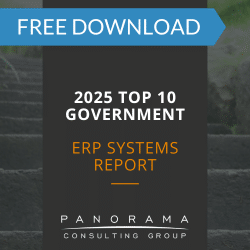- A final ERP decision carries long-term operational and financial consequences that require careful validation.
- ERP due diligence often reveals misaligned assumptions, hidden costs, and overlooked user needs.
- The ERP procurement process benefits from structured internal friction that surfaces critical questions.
- Independent ERP selection ensures decisions are based on strategy and fit—not vendor influence or internal bias.
Months of discovery, demos, stakeholder interviews, and internal debates have culminated in this moment: an ERP contact is awaiting your signature.
Before you make your final ERP decision, please take a moment to read this guide.
A Guide to Conducting ERP Due Diligence
ERP procurement, like any high-stakes business endeavor, benefits from healthy “friction.”
Deliberate, well-timed friction can prevent your organization from spending millions on the wrong system.
Here are six ways to create this friction before committing to a final ERP decision:
1. Recreate Your Business Complexity—Not the Ideal Version
At this point, your team has likely created future-state process maps, but what matters more is whether the ERP system can accommodate the quirks, exceptions, and contradictions that define your actual business.
Our ERP selection team often advises clients to set up workshops where your team walks through real transaction data, edge cases, and end-to-end workflows with the ERP finalists.
Don’t clean the data or simplify the flow. If anything, exaggerate the complications. This is the kind of stress test that reveals configuration gaps or forced workarounds that won’t scale.
The 2026 Top 10 ERP Systems Report
What vendors are you considering for your ERP implementation? This list is a helpful starting point.
2. Examine the Vendor’s Delivery Model Under a Microscope
Choosing the software is one decision. Selecting the team that will implement it is a separate—and equally important—judgment call. Even the best ERP can underperform if implemented by an inexperienced or misaligned partner.
Our business software consultants always tell clients that they should ask to meet the actual implementation team, not just the sales or pre-sales crew.
Ask detailed questions, such as:
- What experience does your team have with ERP implementations in our industry?
- How do you manage scope changes that come up mid-project?
- What happens if our internal team can’t provide the resources you’re expecting?
3. Bring in the People Who Will Feel the Pain
Most ERP procurement processes are driven by functional leadership and IT. That makes sense structurally, but it often sidelines the people closest to daily operations. These are the individuals who will either make or break your system’s adoption.
Before you sign a contract, pull together an extended user group—operators, schedulers, front-line analysts—and let them observe and interact with the short-listed systems in an applied setting.
Not only will you get unfiltered feedback, you’ll likely uncover blind spots that weren’t evident in previous evaluations.
For example, a food and beverage manufacturer might test how easily production supervisors can adjust batch sizes, record quality holds, and trace raw material origins within a manufacturing ERP system. This might reveal blind spots like confusing interfaces, missing compliance features, or steps that require inefficient workarounds on the shop floor.
4. Re-evaluate Fit Against Strategic Leverage Points
Not every ERP system will align perfectly with your operations. What matters is whether the platform enables the areas where you want to compete and differentiate.
For example:
- If you’re looking to scale through acquisitions, test the system’s ability to handle rapid entity setup and cross-company visibility.
- If your differentiator is real-time data access, re-examine how the system supports analytics at the edge of operations.
- If customer experience is your strategic focus, re-evaluate how well the ERP integrates with CRM and front-office systems to provide a complete view of the customer journey.
5. Recalculate Total Cost Using a Five-Year Lens
Your initial budget assumptions are probably based on license or subscription costs, consulting estimates, and some contingency. However, those assumptions often unravel as usage expands or integrations grow.
We recommend creating an internal model that includes indirect costs, like internal resource allocation, user training, process reengineering, and post-go-live support. Then, simulate different scenarios such as rapid growth, flat revenue, or margin squeeze.
6. Benchmark Against Organizations Who Made the Same Call
Every vendor will point you to success stories, but you need access to more than anecdotes—you need context.
Ask for reference clients in your industry with similar complexity, budget, and internal maturity.
Better yet, try to speak with organizations that made a different ERP choice than yours and explore why. You’ll gain valuable counterpoints that either reinforce or challenge your decision.
After Due Diligence: Challenge the Path Forward Without Reopening the Search
After ERP due diligence, everyone may appear aligned on the selection. However, you shouldn’t hesitate to raise more tough questions.
Here are five ways to uncover any remaining assumptions or unspoken concerns:
1. Conduct a Final Risk Review With C-Suite Ownership
Treat your ERP commitment like any capital-intensive investment. Bring in your CFO, COO, and CIO (if they haven’t already been deeply involved) and conduct a formal risk review.
This should encompass:
- Vendor financial stability
- Technical fit
- Alignment to enterprise goals
- Availability of internal resources to support implementation
- The maturity of your organization’s data, processes, and governance
2. Clarify What Independence Means for Your Procurement Process
If your selection process involves third-party consultants or advisors, ensure their incentives are vendor-neutral. This is especially important if you’re finalizing software contracts, as some “independent” firms are compensated by vendors post-selection.
Executives should demand full transparency here. Independent ERP selection means your advisors are working for you—and only you.
3. Build the First 90 Days of Implementation Backwards
Before you finalize anything, align your team on what the first three months post-contract will look like.
Consider factors such as:
- Resourcing
- Decision-making roles
- Integration timelines
- Executive steering committee structure
Work backward from those milestones. If your internal team isn’t ready—or if your vendor’s assumptions seem off—that’s a red flag.
4. Stress-Test the Change Management Approach
Before committing to an implementation partner, look for evidence that change leadership is taken seriously.
- Have they defined roles for change sponsors and internal change agents?
- Have they developed a structured communication and stakeholder engagement plan?
- Have they defined metrics for measuring adoption and organizational readiness?
If your implementation partner treats change management like a soft skill or an optional workstream, that’s a signal to bring in a third-party change management expert to complement their approach.
5. Validate the Decision One Layer Deeper Than Leadership
Ask your core team to present the rationale behind the final ERP decision to a group of internal stakeholders who weren’t directly involved in the selection. This might include finance managers, plant supervisors, compliance leads, or customer service managers.
The goal is to make sure the reasoning behind the decision stands up when shared with people who’ll be impacted by it but weren’t part of the decision-making.
A Slower ERP Decision Can Be a Smarter One
ERP decisions are often made under pressure—from vendors, internal stakeholders, or looming deadlines.
The best decisions are made under discipline. That discipline shows up in the questions you’re willing to ask even when the decision seems obvious.
If you’re approaching this final stage, our ERP software consultants can validate your ERP procurement process so it’s grounded in independent thinking and the realities of your business complexity.


